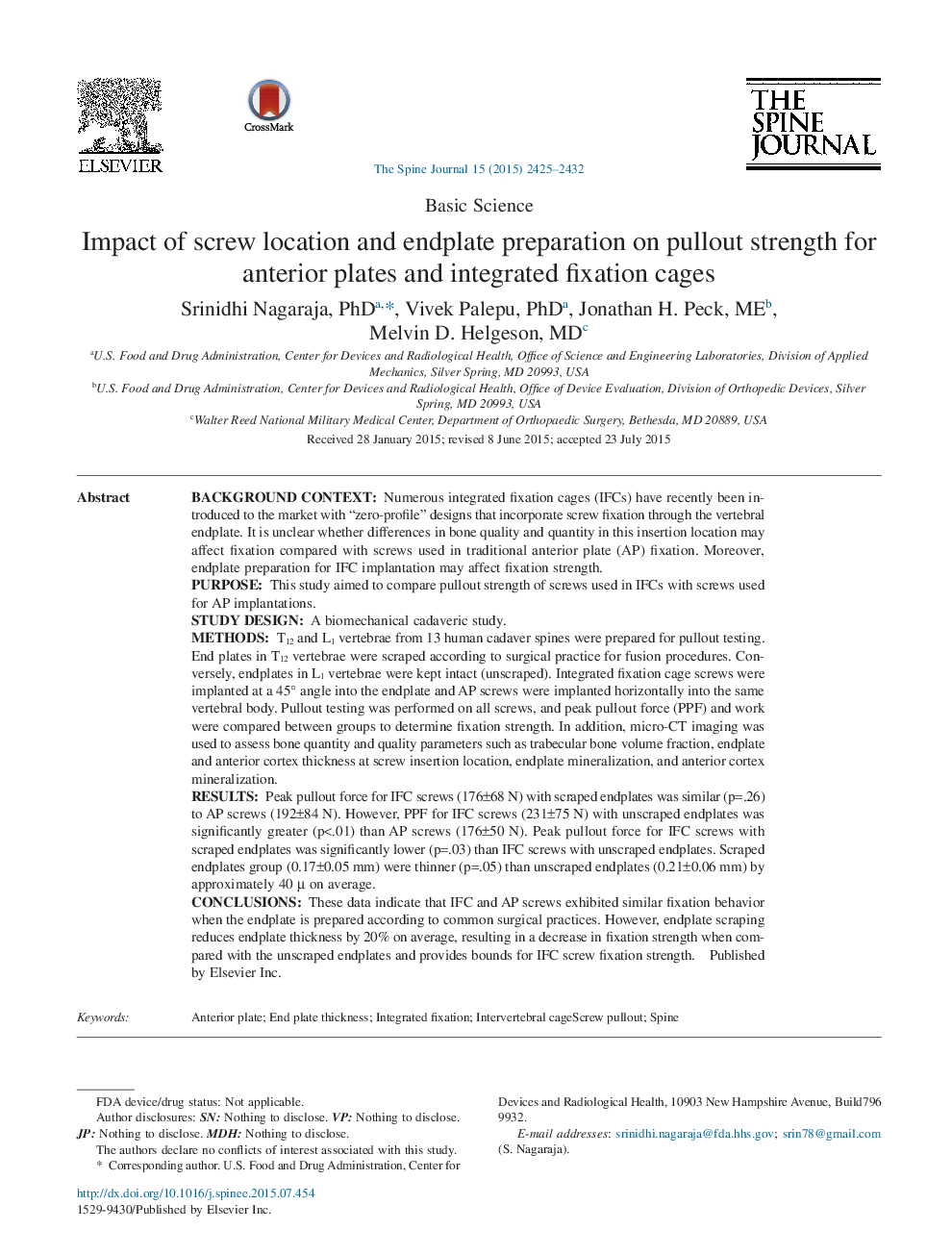| کد مقاله | کد نشریه | سال انتشار | مقاله انگلیسی | نسخه تمام متن |
|---|---|---|---|---|
| 6211807 | 1268559 | 2015 | 8 صفحه PDF | دانلود رایگان |
Background ContextNumerous integrated fixation cages (IFCs) have recently been introduced to the market with “zero-profile” designs that incorporate screw fixation through the vertebral endplate. It is unclear whether differences in bone quality and quantity in this insertion location may affect fixation compared with screws used in traditional anterior plate (AP) fixation. Moreover, endplate preparation for IFC implantation may affect fixation strength.PurposeThis study aimed to compare pullout strength of screws used in IFCs with screws used for AP implantations.Study DesignA biomechanical cadaveric study.MethodsT12 and L1 vertebrae from 13 human cadaver spines were prepared for pullout testing. End plates in T12 vertebrae were scraped according to surgical practice for fusion procedures. Conversely, endplates in L1 vertebrae were kept intact (unscraped). Integrated fixation cage screws were implanted at a 45° angle into the endplate and AP screws were implanted horizontally into the same vertebral body. Pullout testing was performed on all screws, and peak pullout force (PPF) and work were compared between groups to determine fixation strength. In addition, micro-CT imaging was used to assess bone quantity and quality parameters such as trabecular bone volume fraction, endplate and anterior cortex thickness at screw insertion location, endplate mineralization, and anterior cortex mineralization.ResultsPeak pullout force for IFC screws (176±68 N) with scraped endplates was similar (p=.26) to AP screws (192±84 N). However, PPF for IFC screws (231±75 N) with unscraped endplates was significantly greater (p<.01) than AP screws (176±50 N). Peak pullout force for IFC screws with scraped endplates was significantly lower (p=.03) than IFC screws with unscraped endplates. Scraped endplates group (0.17±0.05âmm) were thinner (p=.05) than unscraped endplates (0.21±0.06âmm) by approximately 40âµ on average.ConclusionsThese data indicate that IFC and AP screws exhibited similar fixation behavior when the endplate is prepared according to common surgical practices. However, endplate scraping reduces endplate thickness by 20% on average, resulting in a decrease in fixation strength when compared with the unscraped endplates and provides bounds for IFC screw fixation strength.
Journal: The Spine Journal - Volume 15, Issue 11, 1 November 2015, Pages 2425-2432
